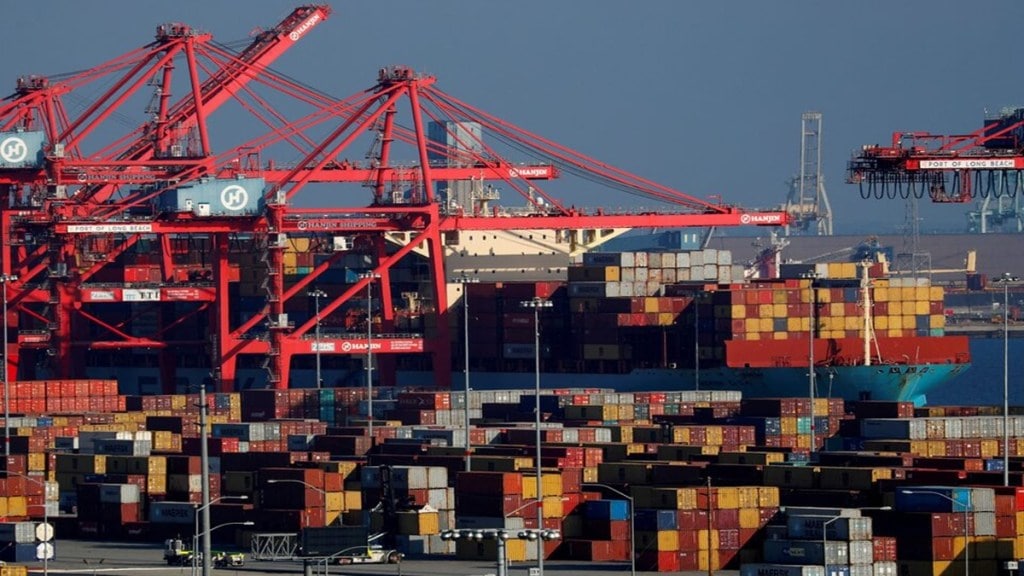India’s overall exports are expected to touch $ 1 trillion this financial year as buyers seek to diversify their sourcing in the wake of additional global tariffs. The shipments will be aided by more trade agreements with the most important economies coming into force, the apex body of exporters said Tuesday.
This will amount to a growth of 21.2% growth over last year’s $ 824.9 billion. In 2025-26 the merchandise exports are expected to grow 12% to touch $ 525-535 billion while services exports were expected to grow 20% on year to $ 465-475 billion, President of Federation of Indian Export Organisations S C Ralhan said.
If the predictions come true, it will be a remarkable turnaround for goods exports, which saw an over 3% decline in FY24 and flat growth in FY25. Services exports have on the other hand have been relatively buoyant and raising their share in the country’s overall exports.
All the major sectors are expected to show a big improvement over the previous year with big increases expected in electronics, engineering sector, chemicals, textile and clothing, pharma and even agriculture. Even the petroleum and gems and jewellery exports will be in a positive zone in the coming year.
The electronics exports are expected to touch $ 60 billion this year from $ 44 billion in 2024-25. One of the key drivers will be the electronics manufacturing units being set up under the production linked incentive scheme starting production this year. Another factor will be the buyers – particularly in the US – looking beyond China for sourcing. Apple has already announced that it will be shifting assembly of all iPhones for the US market to India. In the last financial year Apple sourced Rs 1.5 lakh crore worth of [products from India.
It is not just Apple, many other companies are looking to India and trade diversion from China will bring at least an additional $ 5 billion worth of opportunity, director general and chief executive officer Ajay Sahai said.
The Bilateral Trade Agreement (BTA), FTAs with UK, European Free Trade Association (EFTA) and European Union (EU) wll be aiding the efforts. The interim trade deal that exempts India from reciprocal tariffs itself will offer a big advantage over the competitors, Sahai said.
Gems and jewellery sector’s exports will touch $ 32-25 billion this year as compared to $ 29.8 billion last year. The exports from the sector have been contracting in the past two years due to fall in demand and difficulty in sourcing natural diamonds. Petroleum exports that contracted 25% in FY 25 to $ 63.3 billion will be back to more than $ 70 billion, the FIEO CEO said.
Agriculture exports will grow to $ 55 billion from $ 48.5 billion, chemicals will chip in with $ $ 40=45 billion exports, textile and clothing with $ 23-25 billion and pharma $ 30 billion.
Despite the healthy outlook, some headwinds are expected to come from technical and non-tariff barriers. The latest one facing the industry is the implementation of Digital Product Passport (DPP) that will be implemented by the EU from January 1, 2026.
It will be mandatory for a wide range of products, starting with sectors like electronics, batteries, textiles, and construction materials from 1st Jan, 2026 with wider rollouts expected by 2026–2030. DPP aims to digitally record, store, and share information about a product’s entire life cycle—from raw materials to manufacturing, usage, recycling, and disposal.
It will increase the compliance burden for Indian exporters, particularly Micro, Small and Medium Enterprises (MSMEs). Non-compliance with DPP requirements may lead to rejection of consignments or loss of competitiveness in the EU market, which is becoming increasingly sustainability-focused, FIEO said. This DPP comes on the back of EU’s carbon tax, deforestation regulations and Eco Design Sustainable Product Regulation all of whom will come into force from January 1, 2026.

